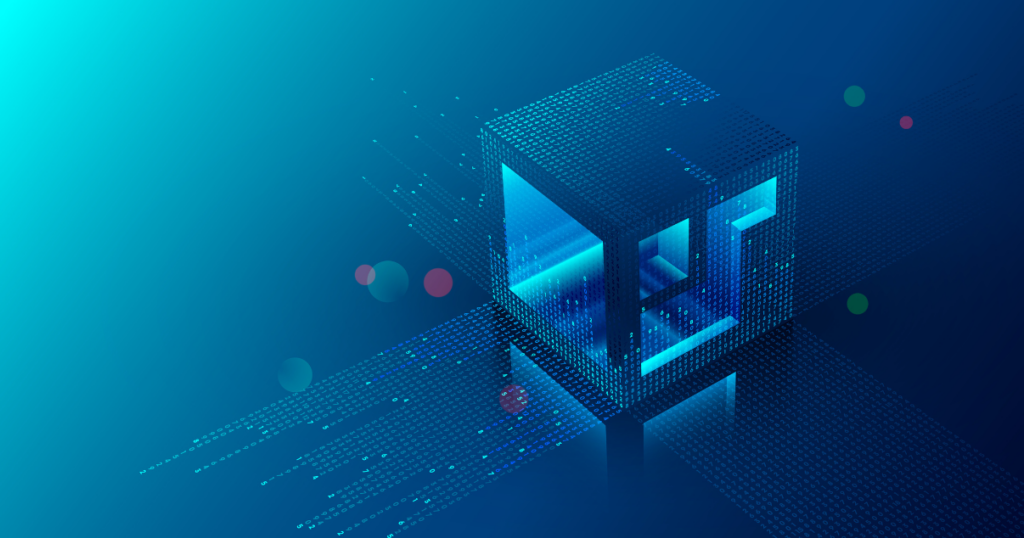
Anybody who has made any forays at all into the landscape of blockchain and crypto technology will have come across terms such as “Layer 1”, “Layer 2”, and even “Layer 3”.
If you want to understand the different blockchain architecture layers, these are key terms to assimilate into your knowledge base. That is why we are offering this straightforward guide to the technology in question so that you can have blockchain layers explained.

At the heart of the concept of blockchain layers is the issue of scalability. When companies aspire to create blockchain systems that can outstrip the functionality of legacy solutions, the need to accommodate ever-increasing numbers of users – and the data they generate and ingest – is acute. Blockchain layers are key to the ability to achieve that ambition.
Should you, or anybody in your team, be asking the question: “What are crypto layers?” we are here to provide the answers. As a company that prides itself on its record in pioneering blockchain development, ZirconTech has extensive experience in, and expertise with, blockchain layers.
We are an ideal partner for any enterprise that is keen to understand how blockchain architecture layers work, and how they can be applied to the creation of market-ready solutions that deliver significant business benefits.
What Is Blockchain Scalability?
The need to be able to scale your operations is fundamental to the successful adoption of blockchain technology. And blockchain layers are key to the ability of enterprises that embrace the blockchain to be competitive and effective in the way they operate.
More and more companies and individuals are now comfortable with the concept of operating in this new digital space. As increasing numbers of people use cryptocurrency, for instance, the need grows for enhanced levels of network security and data storage, among other functions.
The most obvious way in which blockchain scalability manifests itself is in the number of transactions per second (TPC) that can be processed by a system. For instance, Visa’s well-established VisaNet electronic payment network can process more than 20,000 transactions per second. Bitcoin’s main blockchain was recently measured at being able to handle just seven TPC – not seven million or even seven thousand, just seven.
Clearly, the challenge is there to ensure that Bitcoin, and other big names in the crypto space, can handle increasing numbers of TPC so that it represents serious competition to legacy providers such as Visa.
One of the most significant challenges in this context was labeled the Blockchain Trilemma by Vitalik Buterin, the co-founder of Ethereum. Ideally, a blockchain should deliver three important facets to its users: decentralization, security, and scalability.
Historically, however, it has been suggested by Buterin and others that only two of those three benefits can be delivered simultaneously. Whichever two your network focuses on, the experts will tell you, the third attribute will be found wanting.
This is an ongoing challenge for blockchain developers, one that is most cogently addressed by the continuing development of blockchain architecture layers.
What Are Blockchain Layers?

So, if you are still wondering precisely what are crypto layers, let’s take a detailed look at the blockchain architecture layers and their different but complementary functions in the blockchain.
Layer 1
Layer 1 is the base, the foundation upon which the rest of the system is constructed. It is the underlying main blockchain architecture. When people refer to Bitcoin or Ethereum, for instance, Layer 1 tends to be what they are instinctively thinking of.
This is the peer-to-peer network that assimilates all the nodes on a blockchain into a single system. Among the blockchain architecture layers, this is the one that oversees and operates the consensus process, the programming languages used, dispute resolution, and all the parameters and rules that govern and administer the basic functionality of a network.
Also known as the implementation layer, it is the underlying structure upon which the other blockchain layers are based.
There are several scaling solutions that apply specifically to Layer 1. They include:
- Increasing transaction capacity, speed and amount of data contained in each block.
- Consensus protocol improvements. Newer blockchain networks favor the Proof of Stake consensus mechanism, while many popular networks still use the slower Proof of Work consensus protocol.
- Sharding, the process by which blocks of transactions can be divided into smaller batches and processed simultaneously by the blockchain
Layer 2
This is the blockchain layer that is made up of networks and technologies that sit on top of the base layer. Examples include the Lightning Network of Bitcoin, or Ethereum’s Plasma.
These protocols have additional functionality that delivers faster processing and lower costs of transactions. Many Layer 2 solutions achieve this by carrying out most of the transactions off-chain, before moving the completed transactions back to the underlying Layer 1.
Ultimately, the difference between these two blockchain architecture layers is as follows. Layer 1, the blockchain itself, is the first layer in the decentralized ecosystem. Layer 2, meanwhile, is a third-party integration that works hand in hand with Layer 1 to boost the number of nodes and thus increase the efficiency and functionality of the system.
The types of Layer 2 solutions that help to achieve this include:
- Nested networks: The main blockchain sets the rules for the whole network but does not participate in any function. This means that several interlinked blockchain layers can be constructed like the tiers of a cake. One example is the OMG Plasma Project, a Level 2 blockchain for Ethereum’s Level 1 protocol – it delivers cheaper, faster transactions.
- State channels: Such a channel enhances total speed and capacity by enabling two-way communication between a blockchain and an off-chain resource. The process is secured by a smart contract mechanism. Instances of a state channel include Bitcoin Lightning and the Raiden Network of Ethereum. This is a good example of the Blockchain Trilemma in action; the scalability in question is increased, but there is a drop in decentralization when state channels are used.
- Sidechains: This runs alongside the blockchain and is used for exceptionally large transactions. The main chain provides security and dispute resolution, while the sidechain has its own consensus methods. Sidechains are not the same as state channels, because in this instance the transactions are not private – they are published on the ledger. Also, any security breaches on sidechains do not impact on the main blockchain.
- Rollups: These are scaling solutions that increase transaction speeds by carrying them out away from the main chain and uploading the resulting data to the Layer 2 blockchains – though security is provided by Layer 1.
Layer 3
To have blockchain layers explained in full, it is important to understand Layer 3 as well. This is commonly referred to as the application layer. Among the blockchain architecture layers, this is where the DApps and other protocols that enable other apps to function are hosted. By working as a user interface, the Layer 3 applications apply the workings of the blockchains to real world situations.
The Problem with Layer 1 and Layer 2

Many operators are still using the slow Proof-of-Work consensus, for instance. This takes up more time and energy, in an era when the number of users of blockchain technology continues to increase at an impressive rate.
Layer 1 improvements, such as consensus protocol changes and sharding, only go so far in addressing the issue of scalability. Adding such solutions to existing protocols is not easy. With millions of dollars already being traded each day using Ethereum and Bitcoin, for instance, attempting to incorporate extra dimensions of complication to their functions carries a high degree of risk.
The challenge is, as always, to overcome the Blockchain Trilemma. How can you make blockchain networks quicker and more efficient in response to a fast-growing number of users – i.e. introduce greater scalability – without sacrificing either decentralization or security?
What Is The Solution?
There is only one way in which blockchain architecture layers can be constructed in a way that satisfies the need for scalability while also answering the conundrum of the Blockchain Trilemma. That is to build a protocol from scratch that has such solutions built in.
Algorand is a compelling example of precisely such a mechanism. It was founded in 2017 by Silvio Micali, a professor at MIT in Massachusetts who is also a winner of the prestigious Turing Award. Algorand uses a consensus protocol called Pure Proof of Stake (PPoS), and has the following features:
- The leader and selected verifiers are selected from each step of the Byantine agreement protocol. Consensus requires three steps to propose, confirm and write a block to the blockchain.
- A single user’s computation cost involves merely generating and verifying signatures, and simple counting operations.
- This cost is constant, and unaffected by the size of the entire network.
- Enhancing computational power directly improves performance – and makes Algorand scalable. As the network increases in size, it can deliver a high rate of transactions without incurring extra costs.
Conclusions

Scalability is the main obstacle to widespread mainstream adoption of crypto in a cost-effective and efficient form. The development of a fruitful and commercially viable relationship between Layer 1 and Layer 2 is absolutely key to the delivery of solutions that will lead to the future deployment of ubiquitous blockchain-driven mechanisms in our day-to-day business and personal lives.
Algorand, and projects like it, are fundamental to the ongoing expansion and acceptance of crypto. The fusion of both Layer 1 and Layer 2 functionality in an effective manner that, hopefully, satisfies all three corners of the Blockchain Trilemma will be key to the delivery of a level of scalability that makes this possible.
ZirconTech is a software development company with a highly experienced team that can deliver a host of effective bespoke software solutions. Our trained operatives can offer their services in the development of blockchain supply chain solutions, smart contracts, blockchain wallets and DApps.
Please get in touch so that we can discuss how we can work with you to deliver the solutions you and your business require.